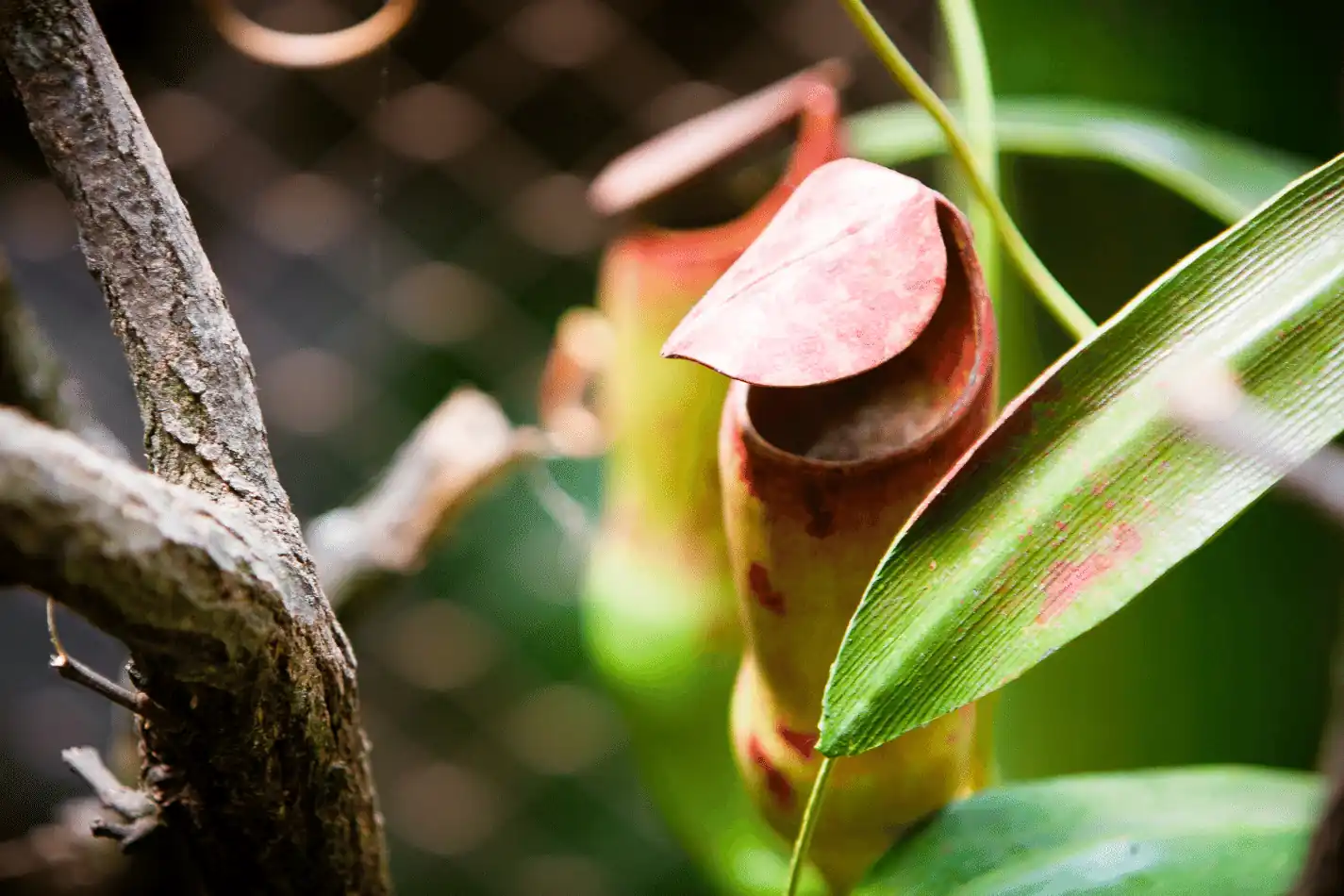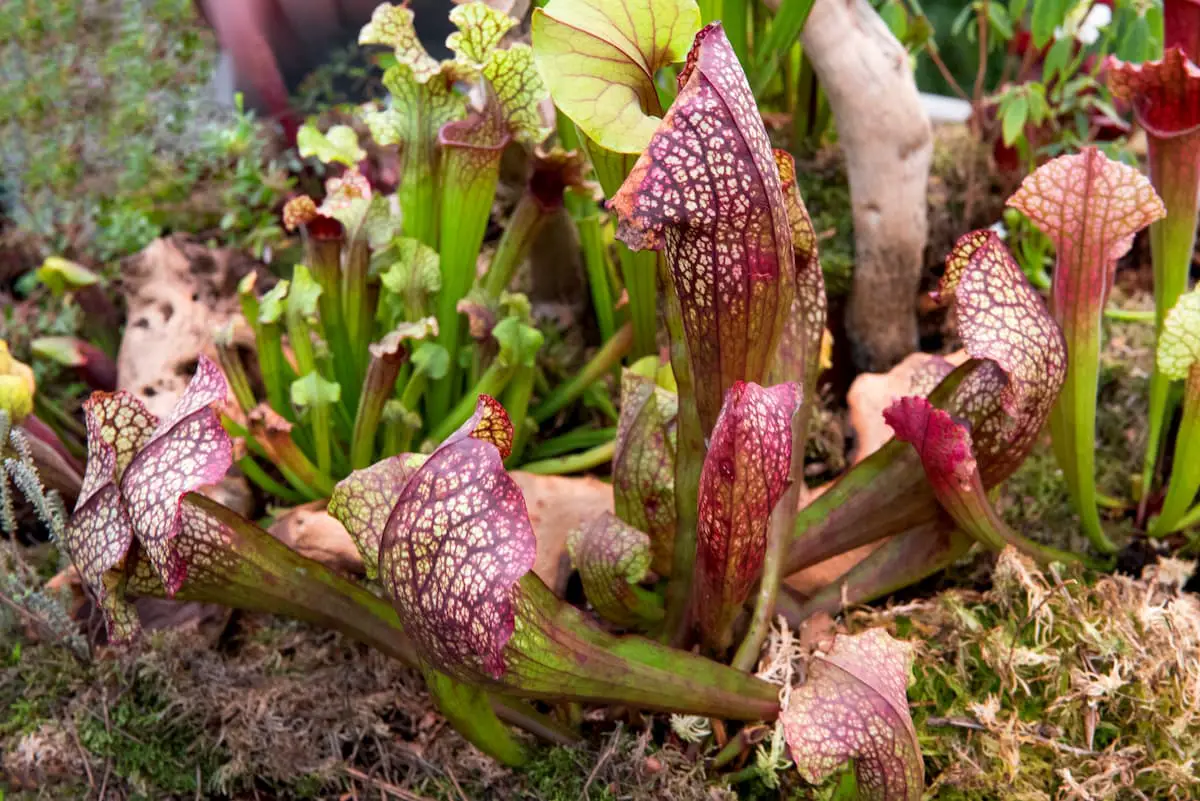Pitcher plants are gorgeous, stunning plants that can be found in both rainforests and swamps. They have a reputation for being one of the most fascinating carnivorous plants on Earth. However, many people start to worry when they notice their pitcher plant turning brown. There are several reasons why this could happen but there is no need to panic! We will discuss some of the top causes of brown leaves on your pitcher plant today so you know what to do next time it happens again.
The most common causes are not enough water or low overall humidity. These are both keys to pitcher plants’ health and wellness. Frequently when these issues occur the pitchers will begin to die off as a way to preserve energy and extend the plant’s lifespan.
This is why the environment you grow them in is key to their survival of pitcher plants and carnivorous plants overall. If many health factors move outside of what the natural habitat would be, this can, and frequently will cause your plant to die off.

Is My Pitcher Plant Dying?
This is typically the first conclusion people end up jumping to as to why their pitcher plant is dying. But, there are many other variables which can play a part in this as well.
If you notice any of these warning signs, consult a local greenhouse or nursery to see if they have an effective solution for you and your tropical pitcher plant!
3 Signs That Your Pitcher Plant is Dying
Lets discuss three potential reasons which might be the cause of your pitcher plant dying off.
Pitcher Plant is Starting to Turn Yellow and Brown
When your pitcher plant begins to start turning yellow or brownish you need to be concerned about what is causing this.
Keeping in mind that it might be lack of water or low humidity, the next most likely culprit would be bugs which are eating away at your leaves.
It could also mean a fungus has begun to grow on the plant and spread from leaf to leaf as well.
If either of these issues continue long enough, your pitcher plant may be starting to perish if you can’t halt progression.
The Pitcher Plant is Turning Completely Black
When the plant begins to have black pitchers it is trying to salvage energy by removing leaves altogether to preserve its life.
The pitcher plant usually will just have the tips of its pitchers turn black before it begins to remove leaves entirely.
Nepenthes can begin to turn black based on two main reasons, overall system shock or the time for dormancy has begun. Shock happens with conditions changing dramatically like a repot or long transfer, dormancy happens when wether begins to cool and move towards fall and winter.
If it is shock then quality care and management will help it move forward and begin growing again but for dormancy you may need to adjust to making preparations for this natural process.
Your Pitcher Plant Is Not Growing New Pitchers
The last concern would be the inability or decision by the pitcher plant to not grow new pitchers. This is particularly common with more specific issues related to upkeep and care.
Certain reasons affecting this include the lack of humidity and light. Other causes of lack of pitchering in Nepenthes include over-fertilization and using mineral-rich water or soil.
However, if this occurs during other times of the year it may be an issue with either bugs or fungus on your plant which could lead to its demise without treatment!
Should I Cut Brown Pitchers Off my Pitcher Plant?
Just like with any other plant you can do it a service by removing the flowers as they wilt or the pitchers if they are shriveling as it means the plant is letting them go to conserve energy.
Cutting off the pitchers is not really necessary as they will fall from their own weight or be removed by you during your normal upkeep of the plant.
However, if there have been a large amount of brown pitchers on your pitcher plant it may be best to remove them just in case they contain disease that could infect other parts of the plant.
What do I do When a Pitcher Plant is Not Growing New Leaves?
If your pitcher plant seems to be growing new leaves but they are browning, shriveling and falling over there may be an issue with humidity or light levels.
Ensure you have proper ventilation in the room as well as getting some indirect sunlight on it for a few hours a day.
If this does not work you can try to increase the humidity levels by misting it once or twice a day with some water so long as your plant is potted in sphagnum moss and has no drainage holes.
This should help get things going again!
Why are the Pitchers on my Pitcher Plant Brown and Brittle?
When your Pitcher Plant has dry or brown pitchers, it is not getting enough water. The plant might be in an area with low humidity . Or it might be in both places.
Pitcher plants need to be watered and they like it when it’s humid. So if your plant is dry or the humidity drops, the leaves will fall off so the plant doesn’t use up all of its energy.
But, your plant can come back from a period of drought if you take good care of it though some pitchers may be lost.
Watering
Keep the soil moist. If it feels dry, water again until you see water coming out of the drainage. Empty excess water from the saucer frequently to ensure no root rot can occur.
Overwatering is a big issue especially if drainage is poor and is just as bad for the plant as underwatering will be.
Humidity
Give your plant a shower when watering it for optimum success. Spray the leaves in the sink and not just adding water to the soil alone.
Remember that the pitchers should always have some water in them, so it’s a good idea to give your plant some water while you’re bathing it. Make sure they are no more than 50 percent full of water, though.
Another method to increase humidity is to utilize a humidifier, install a pebble tray beneath your plants, or mist it daily or a few times each week.
Too Much Light
There are issues with exposing your Nepenthes to too much light overall as it can cause the leaves to dry out and wilt, especially after a period of being wet.
You should also avoid direct sunlight as it can burn your pitcher plant or even cause them to fall off which is not good for their growth.
Try moving the plant away from any window where there might be too much light coming in if you suspect this may be the cause.
Wrong Soil Mix
Many try to use regular potting or plant soils but this is a death curse for carnivorous plants as the mineral content is too high and this burns the roots and actually can kill the plant by itself.
This is why you should always use a peat moss based mix such as sphagnum or live, which is available online and at most nurseries, we talk about soil here in more greater detail.
You want to ensure your plant has good drainage with no water pooling up in the bottom of the pot.
Diseases and Pests
Disease can strike any plants, especialy if they are already having issues.
There are a few different types of diseases that can affect your plant, some examples include bacterial wilt which is deadly and root rot. These will cause wilting or browning on the leaves as well as yellowing on older growth along with dark spots appearing on younger pitchers first.
Pests are little things that can consume the plant to death and for many plants they can cause fast plant death if not caught soon enough.
Final Thoughts on Yellowing Pitcher Plant Pitchers
Pitcher plants are sensitive to changes in their surroundings. When they get too much light, dryness or pests, the leaves will turn brown and brittle.
Luckily there are many things you can do if this happens to your plant. You should always check on your pitcher plant for signs of change so that you don’t miss anything important!



Leave a Reply